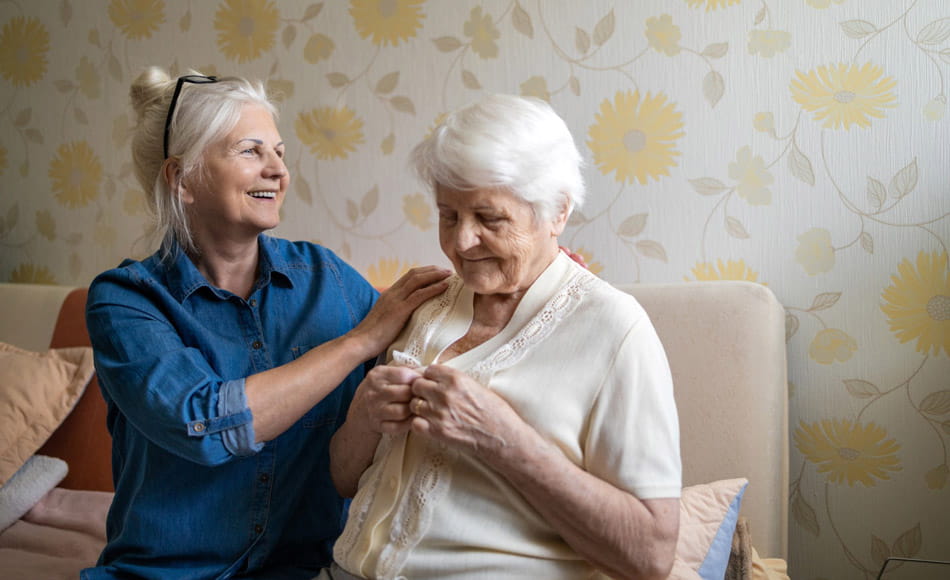
Treatment options
There are several ways that breast cancer can be treated. These include:1
- Surgery
- Radiotherapy:
- External beam radiotherapy (EBRT)
- Brachytherapy (interventional radiotherapy)
- Chemotherapy
- Hormone therapy
- Targeted therapy

Patients typically receive a number of these treatments.
Surgery is commonly used to first remove the tumor after which radiotherapy is given to help prevent the cancer from returning.
If the cancer is advanced, chemotherapy or hormone treatments may be used to help shrink the size of the tumor before surgery. Hormone therapy and targeted therapy may also be used after surgery and radiotherapy to further help prevent the cancer from returning. The types of treatment you receive will depend on how far the cancer has progressed.
The table below provides a broad overview of the different treatments.2
| Treatment | Carcinoma in situ | Early | Advanced |
|---|---|---|---|
Surgery (lumpectomy or mastectomy) Removal of the tumor and surrounding tissue (lumpectomy) or the whole breast tissue (mastectomy). | |||
External beam radiotherapy (EBRT) The source of radiation is directed at the tumor from outside the body through the skin. | |||
Brachytherapy (interventional radiotherapy) Works by precisely targeting the cancerous tumor. The source of radiation is placed directly next to the tumor. | |||
Chemotherapy May be used before surgery to help shrink the tumor or to treat cancer that has spread beyond the breast. Several pharmaceutical products are effective. Your doctor will be able to advise the best one for you. | |||
Hormone therapy A course of hormone therapy may be used to prevent the cancer from returning. (Note: this is different to hormone replacement therapy). | |||
Targeted therapy Targeted therapy is a type of treatment that uses pharmaceutical products or other substances to identify and attack specific cancer cells. Can be used in combination with chemotherapy. |
Advantages and disadvantages of breast cancer treatments
Each treatment has advantages and disadvantages. These should be considered and discussed with your healthcare professional when choosing the most suitable treatment option for you.
| Treatment | Advantages | Disadvantages |
|---|---|---|
Surgery (lumpectomy or mastectomy) | Clinically proven to be highly effective. In early breast cancer lumpectomy with additional radiotherapy is a standard of care and avoids the need for removal of the whole breast (mastectomy).3 One-time procedure. Can be given in combination with other treatments. | May require a hospital stay of up to 1 week.3 Can cause scarring and discomfort. |
External beam radiotherapy (EBRT) | Clinically proven to be highly effective at preventing cancer from returning after surgery.4 You can receive treatment on an outpatient basis. Can be given in combination with other treatments. | Treatment course can be long (up to 5-6 weeks) and includes repeat visits to hospital on a daily basis. There are recent data reporting effectiveness of 1-week course of EBRT after surgery for early breast cancer.4 |
Brachytherapy (interventional radiotherapy) | In early breast cancer clinically proven to be highly effective at preventing cancer from returning after surgery.5-8 Can be used after EBRT as an additional radiotherapy dose or instead of EBRT (see radiotherapy treatment options below). Short treatment times of 5-7 days when used as APBI (see below). You can receive treatment on an outpatient basis. | May not available at all hospitals. May need to stay in hospital for treatment in some cases. |
Chemotherapy | Clinically proven to be highly effective.9 Can be given in combination with other treatments. | Treatment course can be long (spread out over 4-6 months). Some side effects including fatigue, hair loss and an increased risk of acquiring infections.12 |
Hormone therapy | Clinically proven to be highly effective at preventing the cancer from returning if the cancer is responsive to hormone levels.10 Can be given in combination with other treatments. | Treatment course can be long (spread out over several years). Can affect the functioning of the ovaries.10 |
Targeted therapy | Clinically proven to be highly effective.11 Can be given in combination with other treatments. | Treatment course can be long (spread out over 1 year). Some side effects including bleeding, pain in different parts of the body and an increased risk of acquiring infections.11 |

Radiotherapy treatment options
After surgery to remove the cancer, radiotherapy is commonly used to kill any cancerous cells that may be left in the surrounding tissues.
Using radiotherapy after surgery helps prevent the cancer from returning. There are two main radiotherapy approaches used to deliver the radiotherapy: whole breast irradiation (WBI) and accelerated partial breast irradiation (APBI).

Whole breast irradiation (WBI)5
The whole breast is given a dose of radiation using external beam radiotherapy.
Treatment involves visiting the hospital for 5 days a week, for up to 5-6 weeks.
At each treatment session, you will be positioned comfortably on a couch and rays of radiation will be directed at the affected breast from a special machine.
It is not painful, but you will need to lie still for a few minutes at each session while the radiotherapy is being given.
After completion of the full treatment schedule, a further dose of radiation, known as a ‘boost’, may also be given to just the area where the cancer was located.
The ‘boost’ can be given as external beam radiotherapy or brachytherapy.

Accelerated partial breast irradiation (APBI)5
Only the region of the breast where the cancer was located is given a dose of radiation.
This can be performed using external beam radiation therapy or brachytherapy. Utilisation of APBI increased over last decades in the US and the majority of APBI treatments were performed using brachytherapy.12
Treatment is short compared to WBI as it only involves visiting a hospital for 5-7 days.
The availability of APBI varies by country and hospital. Ask your doctor if APBI is available to you.

Brachytherapy:
The Precise Answer for Tackling Breast Cancer
References
- National Cancer Institute. Available at: https://www.cancer.gov/types/breast/patient/breast-treatment-pdq#_185 Accessed June 2021
- National Cancer Institute. Available at: https://www.cancer.gov/types/breast/hp/breast-treatment-pdq Accessed June 2021
- Freedman GM et al. Cancer 2009; 115(5):946-51. Available at: https://acsjournals.onlinelibrary.wiley.com/doi/full/10.1002/cncr.24094 Accessed June 2021
- Brunt AM et al. Lancet 2020; 395:1613-26. Available at: https://www.thelancet.com/journals/lancet/article/PIIS0140-6736(20)30932-6/fulltext Accessed June 2021
- Strnad V et al. Lancet 2016 Jan; 387: 229-38. Available at: https://www.thelancet.com/journals/lancet/article/PIIS0140-6736(15)00471-7/fulltext Accessed June 2021
- Strnad V et al. Radiotherapy and Oncology 2018; 128(3);411-420. Available at: https://www.thegreenjournal.com/article/S0167-8140(18)30197-X/fulltext Accessed June 2021
- Polgar C et al. Lancet 2017; 18(2);259-268. Available at: https://www.thelancet.com/journals/lanonc/article/PIIS1470-2045(17)30011-6/fulltext Accessed June 2021
- Hannoun-Levi JM et al. Brachytherapy 2020; 19(1);90-96. Available at: https://www.brachyjournal.com/article/S1538-4721(19)30617-8/fulltext Accessed June 2021
- Cancer Research UK. Available at: https://www.cancerresearchuk.org/about-cancer/breast-cancer/treatment/chemotherapy Accessed: June 2021
- Cancer Research UK. Available at: https://www.cancerresearchuk.org/about-cancer/breast-cancer/treatment/hormone-therapy Accessed: June 2021
- Cancer Research UK. Available at https://www.cancerresearchuk.org/about-cancer/breast-cancer/treatment/breast-targeted-cancer-drugs Accessed: June 2021
- Shaitelman S et al. Int Journal Rad Onc Biol Phys 2016; 94(2):338-48. Available at: https://www.redjournal.org/article/S0360-3016(15)26656-4/fulltext Accessed: June 2021

